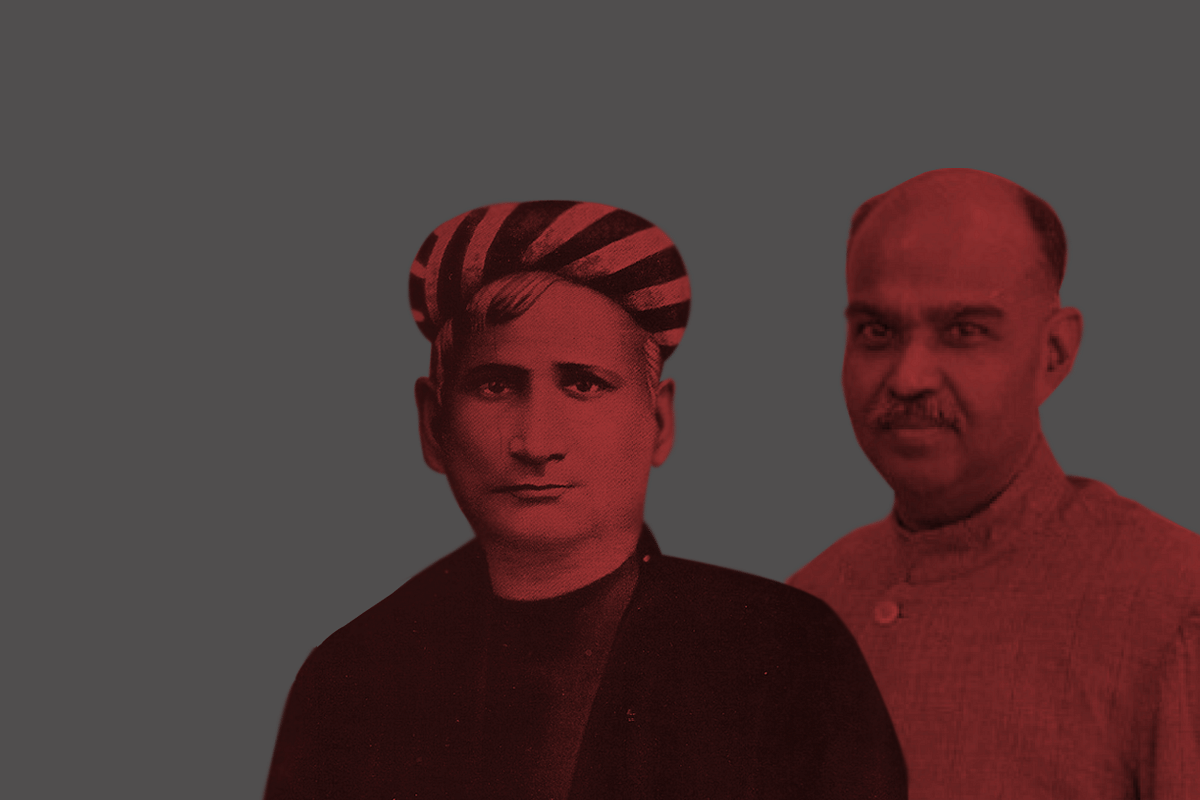Politics
Not Just S P Mookerjee, The Roots Of Hindu Nationalism Are Substantially Bengali
- Now that Modi and Shah are moving India towards a greater understanding of the role of power projection in geopolitics and change, it is important that they acknowledge the Bengali roots of Hindu assertion and nationalism.
- BJP must include Bankim Chandra Chattopadhyay and not just Syama Prasad Mookerjee in its gallery of inspirational icons when Bengal parties are hesitating to do so.

(Bankim Chandra Chattopadhyay and Syama Prasad Mookerjee)
It is interesting that one of the parties opposing the Narendra Modi government’s decision to end Jammu and Kashmir’s (J&K’s) special status was the Trinamool Congress, which has West Bengal as its political base. The man who most vehemently opposed special status to J&K was the Bharatiya Janata Party’s (BJP’s) Bengali founder, Syama Prasad Mookerjee, who gave us the evocative slogan, “Ek desh mein do vidhan, do Pradhan, nahi chalenge, nahi chalenge.”
Mookerjee died in custody in Srinagar while spreading this message in Jammu and Kashmir in 1953. While all newspapers mentioned Mookerjee’s contributions to the Jana Sangh’s nationalist credentials, the BJP, the Jana Sangh’s ideological inheritor, mentioned him only in passing, with his name figuring in Amit Shah’s reply to the debate on the J&K Reorganisation Bill yesterday (5 August).
The attack on the BJP’s move to defang articles 370 and 35A, which gave J&K its special status and the right to deny the same to other Indian citizens, was led (among others) by another Bengali, the Congress party’s leader in the Lok Sabha from West Bengal, Adhir Ranjan Chowdhary. A Member of Parliament (MP) from Berhampore, Chowdhury’s constituency is dominated by Muslims.
If the BJP wants to make big strides in West Bengal, it should not only be giving Syama Prasad Mookerjee most of the credit for yesterday’s game-changing move on Article 370, but also acknowledge the Bengali roots of Hindu nationalism, which is the core binding philosophy of a larger Indian nationalism. Take Hindu nationalism out of the equation, and there is no Indian nationalism left.
Today, the Hindu nationalist ethos seems to reside in the Hindi-speaking belt, thanks to the Ram temple issue, but in the pre-Independence era most of the foundational ideas were laid in the nineteenth and early twentieth centuries. It was largely Bengali intellectuals, who built the early strands of Hindu nationalism.
Whether it is Bankim Chandra Chattopadhyay, who gave us the sublime and elevating Bande Mataram, Sri Aurobindo, Swami Vivekananda, or even the idea of India as Bharat Mata (conceptualised through a painting of Abanindranath Tagore), the early roots of Indic/Hindu nationalism were Bengali.
This is not to deny other roots, including the role of the Arya Samaj in north-western India, and Lokmanya Tilak in Maharashtra, or earlier Hindu icons like Chhatrapati Shivaji Maharaj and Krishna Deva Raya, but the systematic intellectual and emotional development of the content of Hindu nationalism were substantially developed in Bengal, and taken forward later by Tilak and V D Savarkar.
Consider this: Ananda Math, Bankim Chandra Chattopadhyay’s much-celebrated work, is about the revolt of a monastic order of saffron-clad warriors fighting against their Islamic tormentors.
He was also an early proponent of the idea that Hindus were making a big mistake by espousing the cause of asceticism over real worldly power. In Swapan Dasgupta’s book, Awakening Bharat Mata: The Political Beliefs of the Indian Right, he quotes Bankim Chandra Chattopadhyay thus: “‘Knowledge is power’: that is the slogan of western civilisation. ‘Knowledge is salvation’ is the slogan of Hindu civilisation. Europeans are devotees of power. That is the key to their advancement. We are negligent towards power; that is the key to our downfall.”
Savarkar, who popularised the concept of muscular Hindutva during the last years of the British Raj, would certainly agree with Chattopadhyay.
Now that Narendra Modi and Amit Shah are moving India towards a greater understanding of the role of power projection in geopolitics and change, it is important that they acknowledge the Bengali roots of Hindu assertion and nationalism.
Jai Shri Ram and Jai Maa Durga become more potent when they are imbued with the rallying cry of Bande Mataram. It was the Congress brand of one-sided secularism that truncated Bande Mataram to just two stanzas, and even this is being rejected by the minorities as antithetical to their beliefs.
Just as the BJP latched on to Sardar Patel as its own icon when the Congress focused on hero-worship of the Nehru-Gandhi dynasty, it should be doing the same by including Chattopadhyay apart from Syama Prasad Mookerjee in its gallery of inspirational icons when Bengal-based parties are hesitating to do so in order to retain their Muslim vote banks.
Support Swarajya's 50 Ground Reports Project & Sponsor A Story
Every general election Swarajya does a 50 ground reports project.
Aimed only at serious readers and those who appreciate the nuances of political undercurrents, the project provides a sense of India's electoral landscape. As you know, these reports are produced after considerable investment of travel, time and effort on the ground.
This time too we've kicked off the project in style and have covered over 30 constituencies already. If you're someone who appreciates such work and have enjoyed our coverage please consider sponsoring a ground report for just Rs 2999 to Rs 19,999 - it goes a long way in helping us produce more quality reportage.
You can also back this project by becoming a subscriber for as little as Rs 999 - so do click on this links and choose a plan that suits you and back us.
Click below to contribute.
Latest